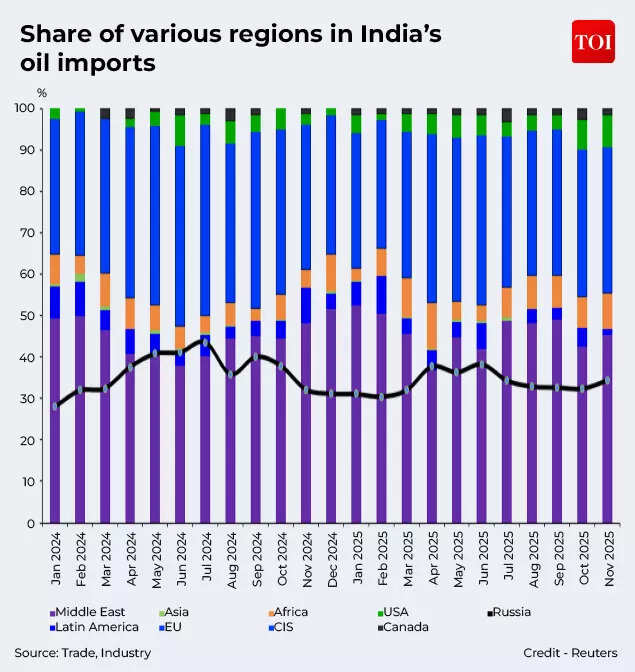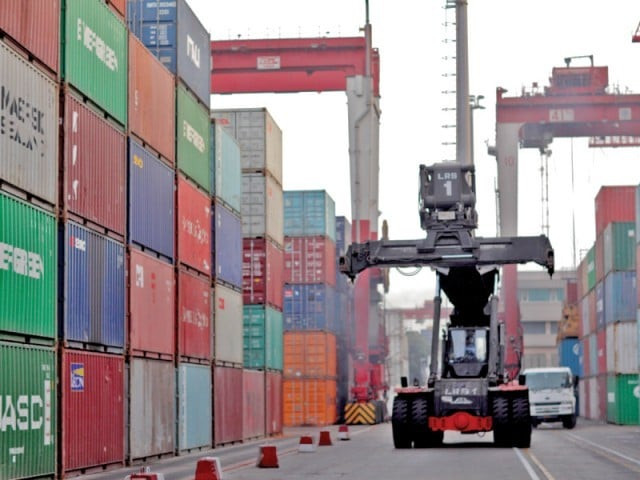Business
PM orders review of high tax rates | The Express Tribune

Prime Minister Shehbaz Sharif. Photo: File
ISLAMABAD:
Prime Minister Shehbaz Sharif has instructed a review of the possibility of reducing higher rates of income and sales tax to stop capital and human flight, as despite putting the maximum burden, the government suffered a Rs276 billion revenue shortfall in the first four months.
In what appears to be a highly ambitious plan, which is still in its infancy and will undergo multiple rounds of scrutiny, the government can inject Rs1.1 trillion into the economy and households by slashing the unaffordable rates of corporate, individual and salaried class income tax and sales tax.
Government sources said that the Federal Board of Revenue (FBR) was preparing different models to bring taxes down to regional levels, so companies stay back in Pakistan and individuals too are not overtaxed.
The FBR’s initial working suggested a reduction in corporate income tax from 29% to 25%, the maximum individual rate from 45% to 25%, abolishing 10% super tax, ending 15% inter-corporate dividend tax and cutting sales tax from 18% to 15%.
Sources said that the estimated annual revenue impact of the move could be Rs1.1 trillion, with the maximum impact of over Rs600 billion on account of reducing the standard sales tax rate.
However, it is highly unlikely that the International Monetary Fund (IMF) may endorse such a plan, which will leave the government with the option of rolling out the plan after the end of the bailout package, according to the sources.
The IMF too appears concerned about the multinational companies leaving Pakistan, which is contrary to the IMF’s goal of attracting foreign investment by ensuring an internationally competitive environment. Individuals are also looking for overseas jobs.
Sources said that taxes have reached such a suffocating level that on the one hand the companies end up paying about 60% of net income in taxes and on the other hand they are forced to pay advance income tax to the FBR to help it achieve targets.
The situation was the worst in the case of salaried class. According to the FBR, the “withholding tax collection from salaries registered the highest increase of Rs214.2 billion (55% growth) in the last fiscal year, primarily due to a decrease in the number of income tax slabs and an increase in the corresponding tax rates in each slab”.
As a result, the salaried class paid a record Rs605.6 billion in the last fiscal year, the second highest after contract payments. Ironically, in contract payments, there are also salaried class-related payments.
Revenue performance
The FBR’s statistics showed that against the target of Rs4.1 trillion, the four-month (Jul-Oct) collection reached Rs3.833 trillion, widening the shortfall to Rs276 billion. It came despite the imposition of new taxes in the budget, the increase in tax rates and some enforcement measures. The Jul-Oct collection was only Rs396 billion, or 11.5%, more than the last fiscal year.
Tax authorities said that revenues suffered badly because of a slowing economy and the situation was further complicated by curtailing the local gas production for the sake of consuming surplus imported LNG. They said that the carbon levy on furnace oil also impacted its use, which in turn affected the sales tax collection.
After the FBR sustained a Rs197 billion shortfall in the first quarter, the IMF during the recent review talks agreed to cut the annual target of Rs14.13 trillion by the same amount. However, the FBR has not adjusted the monthly targets.
The government has assured the IMF that it was ready to take contingency measures to the tune of Rs200 billion annually in January, if the first-half collection remained below the target or expenditures exceeded the agreed limit.
The FBR collected Rs1.8 trillion worth of income tax in four months, missing the target by Rs103 billion. However, the collection was 11.5%, or Rs185 billion, higher than last year.
Sales tax collection amounted to Rs1.36 trillion, falling behind the target by Rs182 billion. It was still Rs123 billion higher than last year.
Federal excise duty collection stood at Rs259 billion, slightly lower than the four-month target. Customs duty collection reached Rs419 billion, which was Rs12 billion more than the target due to increased imports.
Tax authorities said that due to the duty reduction in budget, many items slipped to a zero levy, which led to a 42% increase in their imports. Pakistan is also facing the dumping of foreign goods, which is harming local manufacturing.
PM Sharif on October 25 established a working group on customs, trade, tariffs and dumping, which will be headed by a leading businessman. The working group has held its first meeting this week and will present its findings to the government.
The FBR missed the monthly tax collection target by Rs71 billion as it got Rs950 billion in October. The growth in monthly collection was only 8%, which was near the nominal GDP growth.
Tax returns
The FBR on Friday did not further extend the date for filing annual tax returns after the PM stopped it from giving blanket extension in the filing deadline. However, the taxpayers facing genuine hardships may approach their respective field formations through the FBR’s IRIS system for an extension in filing returns.
The FBR recorded a significant increase in income tax return filings for tax year 2025, marking a new milestone in voluntary compliance and taxpayer awareness, it claimed.
As of October 31, 2025, a total of 5.9 million tax returns had been filed, compared to five million returns in the same period of last year, showing an increase of 17.6%.
However, compared to tax year 2024, the number of income tax return filers decreased by 24.3% or 1.9 million. In the last tax year, 7.8 million individuals and companies had filed returns. The filing will continue in the coming months as the inactive taxpayer status attracts penalties.
The taxpayers paid Rs130 billion along with the returns, which were almost at the last year’s level.
Business
Warner Bros Discovery urges shareholders to reject Paramount takeover bid

Warner Bros Discovery has told shareholders to reject a hostile takeover bid from rival Paramount Skydance.
It has pushed back against the approach and stressed it favours a deal from streaming giant Netflix to take control of its movie studios, cable networks and streaming service.
Bosses at Warner Bros, which makes franchises such as Harry Potter and Batman, said the proposed deal from Paramount was “inadequate” and poses a “significant risk” to shareholders.
Samuel Di Piazza Jr, chairman of the Warner Bros board of directors, said: “This offer once again fails to address key concerns that we have consistently communicated to Paramount throughout our extensive engagement and review of their six previous proposals.
“We are confident that our merger with Netflix represents superior, more certain value for our shareholders and we look forward to delivering on the compelling benefits of our combination.”
Paramount lodged a 30 US dollars (£22.50) a share bid for Warner Bros, days after the company agreed to be bought by Netflix in early December in a 72 billion dollar (£54 billion) deal.
Paramount’s offer values Warner Bros at 108.4 billion dollars (£81.3 billion) including debts, trumping Netflix’s 27.75 dollars (£20.81) per share offer, which values Warner Bros at 72 billion dollars or 82.7 billion dollars (£62 billion) including debts.
Netflix agreed to buy the Warner Bros Discovery film and TV studios business whereas Paramount has bid for the whole of Warner Bros.
Earlier on Wednesday, Affinity Partners, the private equity firm owned by US President Donald Trump’s son-in-law Jared Kushner, pulled its backing from Paramount’s bid.
Mr Trump previously warned the Netflix takeover of Warner Bros “could be a problem” because of its combined market share, confirming he would be involved in the decision about whether the US federal government should approve the deal.
Paramount said in its appeal to win over Warner Bros shareholders that its offer would be more likely to pass regulatory scrutiny.
Mr Kushner’s decision to pull his firm’s financial backing is seen as taking away a possible advantage for Paramount to secure Mr Trump’s approval.
Paramount’s bid still has the financial backing of wealth funds run by three governments in the Persian Gulf, widely reported as Saudi Arabia, Abu Dhabi and Qatar.
Paramount earlier revealed it had made six takeover approaches to Warner Bros over 12 weeks, but claimed Warner Bros “never engaged meaningfully”.
Business
Trump sanctions fail to dent flow? India’s oil imports from Russia top cross 1 million barrels a day; show resilience – The Times of India

Donald Trump’s sanctions on Russian oil majors don’t seem to have deterred Indian refiners from procuring crude – though non-sanctioned – from Russia. India’s crude oil imports from Russia are showing resilience in December, days after Trump’s sanctions on Russian firms Lukoil and Rosneft kicked in. The bilateral relationship has remained robust despite Western sanctions pressure.India’s imports of Russian oil are expected to cross 1 million barrels per day this December, according to trade and refining sources quoted in a Reuters report. This is against expectations of a significant reduction, as refiners continue purchasing from non-sanctioned entities that provide deep discounts.
India-Russia Crude Oil Trade Intact
* Data from trade sources quoted in the report indicates that India, the world’s third-largest crude importer, received 1.77 million bpd of Russian oil in November, showing a 3.4% increase from October. * Despite expectations of a significant decrease due to Trump’s sanctions on two major Russian producers, December deliveries are anticipated to surpass 1.2 million bpd, based on initial LSEG trade flow data.

Russia continues to be top oil supplier to India
* This figure could reach an average of 1.5 million bpd by month-end, according to a trade source quoted in the report. It is important to note that the surge in India’s December imports from Russia is attributed to buyers rushing to complete transactions before Washington’s November 21 deadline for deals with Rosneft and Lukoil. LSEG data confirms recent arrivals of such shipments at Indian ports.* However, in January, trade sources indicate that import levels might maintain December volumes as new entities not affected by sanctions begin supplying Russian oil cargoes.* Indian refiners find January prices attractive, with discounts of approximately $6 per barrel to dated Brent, which is two to three times larger than in August, according to sources.According to refining sources, January volumes are expected to be below 1 million bpd since Reliance Industries has stopped purchases. LSEG data shows Reliance is receiving at least 10 Russian oil cargoes this month.

Share of various regions in India’s oil imports
Regarding state refiners, Indian Oil Corp maintains Russian oil purchases at pre-sanctions levels, sources told Reuters. Bharat Petroleum has increased its January acquisitions to at least six cargoes, up from two in December, whilst Hindustan Petroleum is negotiating January loadings, sources were quoted as saying.Private refiner Nayara Energy, with majority Russian ownership including Rosneft, exclusively purchases Russian oil after other suppliers withdrew following EU and British sanctions.Reliance and HPCL Mittal Energy have announced that they will not procure Russian oil. Additionally, Mangalore Refinery and Petrochemicals are not procuring Russian oil for January, the report said.India emerged as Russia’s primary seaborne crude purchaser following Western sanctions imposed on Moscow over the Ukraine invasion. However, these purchases became problematic during trade negotiations with the US, as President Donald Trump raised import tariffs on Indian products to 50%.“Thanks to President Trump’s leadership, Russia has been forced to accept deep discounts and fewer buyers for its oil,” a US official said. “These pressures are limiting the Kremlin’s revenues and increasing the financial strain of sustaining its war.”Russian producers are utilising domestic market swaps to maintain oil flows to India whilst adhering to sanctions. This involves exchanging oil intended for local refineries with export volumes handled by non-sanctioned companies, Reuters said.These swaps are a standard practice in Russia for managing domestic supply constraints whilst maintaining export obligations.“There is a possibility that non-sanctioned entities can increase their crude output and shift supplies to export markets and sanctioned barrels can meet Russia’s local demand,” said Prashant Vashisth, vice president at Moody’s affiliate ICRA.
Business
Air travel now runs on code: Inside the tech backbone reshaping airports – The Times of India

MUMBAI: As the global air travel industry becomes larger and more complex with each passing decade, airlines and airports are increasingly moving towards digitisation. From printed paper tickets that came in airline jackets, to home-printed e-tickets, to today’s digital boarding passes on mobile phones; from conventional check-in and immigration counters to biometric gates; and from local storage of information to cloud-hosted passenger systems, digitisation has transformed every stage of the passenger journey.One of the most closely watched developments is unfolding at Paris Charles de Gaulle Airport (CDG), where a trial is under way to use computer vision and biometrics to identify and track checked baggage. The system captures a bag’s “biometrics” or digital signature through high-resolution imaging and AI-driven pattern recognition, reducing reliance on printed tags. The AI-driven system makes it easier to track bags that go errant, especially at mega transfer hubs. If successful, this could cut sharply into the US$5 billion in annual losses the aviation industry suffers from mishandled baggage, losses borne largely by airlines, Sumesh Patel, SITA President for Asia Pacific said in an interview with TOI. The trial also marks a turning point: “For any such technology to be effective, every stakeholder has to step up—airlines, airports, and ground handlers,” Patel said. “Airlines must integrate new baggage platforms, airports must install advanced imaging cameras across conveyor systems, and backend applications must be synchronised to handle massive real-time data,” he said, adding that he expects the adoption timeline to be under a decade, which is much faster than the past tech cycles.Auto-reflight: Lost bags now rebook themselvesA companion technology already in commercial use is auto-reflight, currently being used by Lufthansa. Lost bags are automatically matched to the next logical flight using AI, without waiting for human intervention, Patel said, adding that Lufthansa now processes around 70% of its missed bags through auto-reflight. The feature could be especially impactful in large global hubs such as London Heathrow, Frankfurt, Dubai, Doha, where tight connections and high transfer loads drive most baggage mishandling, he said. Whether Indian carriers adopt it may depend less on domestic volumes and more on their exposure to such transit hubs. “If a carrier’s major hub adopts the solution, the airline would be keen to participate,” Patel noted. Some airlines are also experimenting with auto-notification, where passengers are alerted the moment a bag is confirmed missing. For Qantas, the first rollout sent notifications during flight, unintentionally overwhelming cabin crew with questions. The system now alerts passengers only when they step off the aircraft.India’s aviation growth is forcing a digital leapIndia, meanwhile, is undertaking one of the world’s largest aviation digitisation programmes. The country has the world’s largest airport cloud-enabled platform that handles passenger processing across its 61 private and govt-owned airports, a digital backbone that handles tasks like conventional check-in and biometrics enabled DigiYatra check-in along with other jobs like baggage processing, passenger identity documentation etc. The 61 airports include 50 govt-run Airports Authority of India (AAI) airports. The programme is part of AAI’s shift to a unified, cloud-based platform that will modernise passenger and baggage processing at its airports. More than 3,500 touchpoints are planned, giving smaller airports the same scalable, technology-driven capabilities as larger ones, said Patel.Unlike other markets where individual airports drive adoption, making for a fragmented adoption, India’s change is being led system-wide as AAI is govt-owned while DigiYatra is a govt-backed initiative. Even conventional check-in counters across dozens of airports now run fully on cloud, enabling uniform upgrades, faster deployment, and real-time data access.India has the third largest domestic aviation market in the world, the country handled 411 million passengers last year (including international passengers) and contributes USD 53 billion to GDP through aviation. With new airports like Navi Mumbai and Jewar designed as digital-first terminals, cloud-enabled operations, biometrics, automated baggage systems, and integrated resource management are becoming foundational. At Navi Mumbai International Airport, for instance, 22 automated self-bag-drop units will enable touch-free processing from Day One.Learning from global IT outagesThe industry’s dependence on digital infrastructure also means outages hurt more than ever. From the global CrowdStrike-triggered disruption to local fibre cuts, the causes vary widely making prediction difficult. Patel emphasises the need for redundant systems like ‘Local DCS’, which act as on-site fallbacks if main airline systems disconnect. Singapore mandates such backups under its Critical Information Infrastructure (CII) framework. Patel said more governments may eventually follow.Airlines, too, are adapting. After IndiGo’s extensive early-December disruptions, the carrier announced more proactive passenger notifications last week and revised processes to prevent passengers from arriving at airports without clarity on delayed or cancelled flights. “The data is always there; it’s about how quickly processes evolve in response,” Patel said.The passenger is changing — fastSITA’s Passenger IT Insights reveal a striking trend: the world’s travellers are no longer dominated by frequent flyers. The fastest-growing cohorts are first-time or occasional flyers and older travellers, a shift visible across Europe, Asia, and North America. These passengers place a premium on clarity, trust, and convenience driving demand for biometrics, simpler check-ins, and real-time baggage visibility, according to the survey.Sanjeev K, SITA, VP Asia Pacific said the shift in passenger profiles globally has made digital adoption a critical focus. India and South Asia are witnessing rapid uptake of mobile and digital services, comparable in some ways to China’s advanced digital payment and app-driven ecosystem, he said, adding that passengers who may not be highly literate or familiar with airport processes are still adapting quickly when technology is made simple, visual and intuitive, often through formats similar to short social-media videos. “Older travellers gain confidence and a sense of accomplishment when they adopt the new technology,” he said. “older passengers are now comfortable with digital tools in their daily lives whether banking, messaging or other services. The initial difficulty lies mainly in understanding airport processes during a first trip. To bridge that gap SITA works closely with airports to ensure support systems are available to guide travellers through steps like using Digi Yatra, kiosks or self-bag drops,” he said. He added that any new technology involves a learning curve, and the aim is to make that first experience stress-free by providing timely assistance so that, after one or two uses, the process becomes second nature to passengers. Patel said that airlines and airports plan to invest USD 8.9 billion and USD 37 billion, respectively, in digital and biometric systems globally. The goal is a frictionless, self-service journey from curb to boarding. The long-term roadmap envisions a world where passengers check in once, digitally, and use that identity throughout their journey: at border control, retail, boarding, and baggage retrieval.
-

 Politics7 days ago
Politics7 days agoTrump launches gold card programme for expedited visas with a $1m price tag
-

 Business7 days ago
Business7 days agoRivian turns to AI, autonomy to woo investors as EV sales stall
-

 Tech1 week ago
Tech1 week agoJennifer Lewis ScD ’91: “Can we make tissues that are made from you, for you?”
-

 Business4 days ago
Business4 days agoHitting The ‘High Notes’ In Ties: Nepal Set To Lift Ban On Indian Bills Above ₹100
-

 Tech7 days ago
Tech7 days agoGoogle DeepMind partners with UK government to deliver AI | Computer Weekly
-

 Sports7 days ago
Sports7 days agoU.S. House passes bill to combat stadium drones
-

 Business7 days ago
Business7 days agoCoca-Cola taps COO Henrique Braun to replace James Quincey as CEO in 2026
-

 Fashion7 days ago
Fashion7 days agoBrunello Cucinelli lifts 2025 revenue growth forecast to up to 12%











